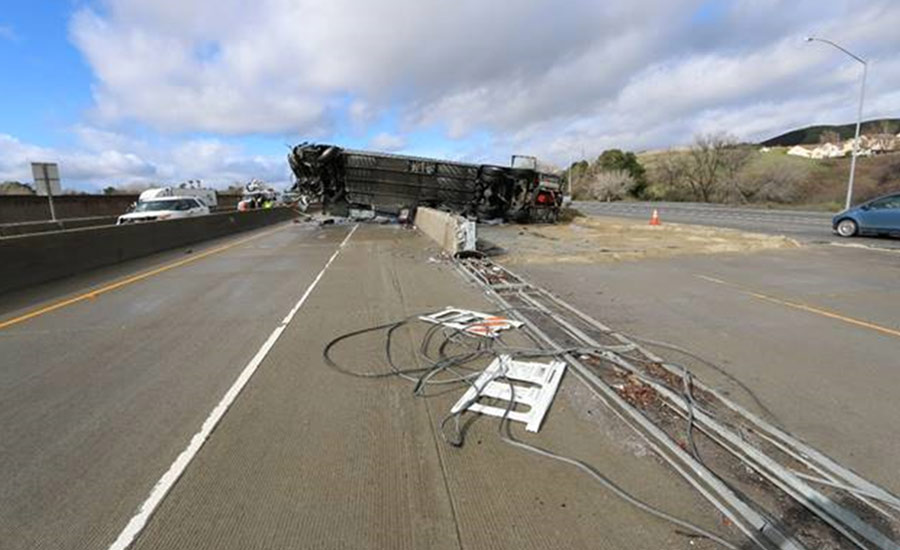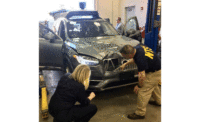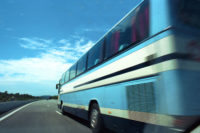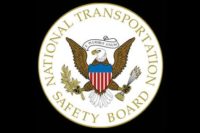Inadequate highway markings caused a Jan. 19, 2016 Greyhound bus crash in San Jose, California that killed two passengers and injured 13 others, according to a National Transportation Safety Board (NTSB) investigation.
The NTSB determined that the bus struck a crash attenuator - which was not properly marked with a reflective sign - rode up a barrier, rolled onto its right side, and came to rest atop the barrier with its undercarriage facing traffic.
(In the photo above, taken Jan. 19, 2016, a Greyhound bus is seen where it came to rest atop a concrete lane barrier after colliding with a crash attenuator. Photo: California Highway Patrol.)
Rainy, dark conditions
The bus was exiting left from Highway 101 at the time of the crash. In the rainy darkness of the early morning, with worn and missing highway markings, the driver thought he was in the exit lane. In fact, he was in the adjacent gore -- the paved area between the main lane and the exit lane. Ahead of him was the unmarked, energy-absorbing barrier called a crash attenuator, and ahead of the attenuator was the concrete barrier. The California Department of Transportation did not mark the gore with stripes or chevrons, which are often used to differentiate the gore from the roadway.
Contributing to the severity of the injuries was the lack of seat belt use by the bus passengers. Seat belts were available for all passenger seats on board the bus, yet only two of the 21 passengers were wearing them at the time of the crash. The two passengers who died in the crash were not wearing seat belts and were ejected from the bus.
Seat belt use would have reduced fatalities, injuries
“This crash did not have to happen because the barrier that the bus hit should have been visible, even in the bad weather, but it was not,’’ said NTSB Acting Chairman T. Bella Dinh-Zarr. “Moreover, the crash would probably have resulted in fewer deaths and injuries if the occupants had worn their seat belts.”
The NTSB recommended that chevrons be painted in gore areas, left-exit signage improved and that Greyhound provide pre-trip safety briefings to include the importance and use of seat belts.
The synopsis, findings, opening and closing statements and all recommendations related to the accident are available online at: https://go.usa.gov/xXXFg
The docket can be accessed at: https://go.usa.gov/xXXZk







